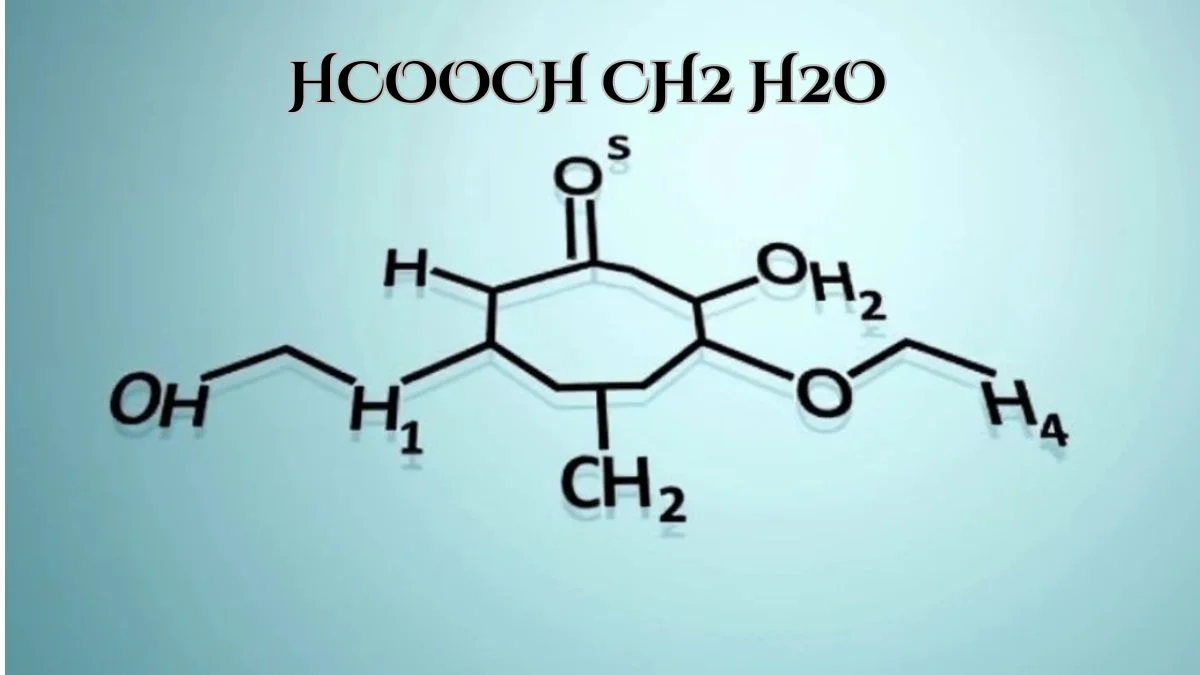Introduction to HCOOCH CH2 H2O
HCOOCH CH2 H2O, commonly known as formate, is an important chemical compound with a unique structure and diverse applications in various scientific disciplines. Its molecular formula indicates a formate group bonded to a methylene group, along with the presence of a water molecule. This distinctive arrangement contributes to the compound’s reactivity and functionality in numerous chemical processes. As a derivative of formic acid, HCOOCH CH2 H2O plays a significant role in organic chemistry, particularly in synthesis and product development.
The chemical composition of HCOOCH CH2 H2O consists of carbon, hydrogen, and oxygen, which contribute to its stability and reactivity profiles. The presence of the formate group (HCOO-) is particularly notable, as it serves as a versatile building block for many organic reactions. Its ability to act as both a nucleophile and electrophile makes it valuable in chemical synthesis. As scientists explore new methodologies to harness the reactivity of HCOOCH CH2 H2O, the compound is becoming increasingly relevant in the research community.
Moreover, HCOOCH CH2 H2O possesses several practical applications across different industries. In agriculture, for instance, it is used as a preservative and feed additive, contributing to enhanced livestock nutrition. In the field of pharmaceuticals, the compound is studied for its potential therapeutic properties and its ability to serve as an intermediate in the synthesis of more complex molecules. Furthermore, the compound’s reactivity lends itself well to environmental applications, offering pathways for biodegradable solutions to traditional chemical processes.
Given its pivotal role in organic chemistry and practical applications, HCOOCH CH2 H2O continues to attract interest from chemists and researchers alike. Exploring its properties and applications serves as a gateway to understanding not only this compound but also the broader implications for chemical research and industry innovation.
Chemical Properties of HCOOCH CH2 H2O
The compound HCOOCH CH2 H2O, also known as methyl formate, exhibits several distinct chemical properties that underscore its significance in various industrial applications. With a molecular weight of approximately 60.05 g/mol, it is relatively light, which contributes to its volatility and ease of handling in different environments. This feature makes HCOOCH CH2 H2O particularly interesting for sectors such as pharmaceuticals and agricultural chemicals.
In terms of solubility, HCOOCH CH2 H2O is known to be miscible with water and many organic solvents, such as ethanol and ether. This property allows it to function effectively as a solvent in reactions involving polar and non-polar compounds. The high solubility in water is largely due to the presence of the hydroxyl group (-OH) that facilitates hydrogen bonding, thus enhancing its utility in hydration reactions and in applications requiring effective solvation.
The reactivity of HCOOCH CH2 H2O is another important aspect of its chemical profile. The compound is classified as an ester, and esters are generally characterized by their susceptibility to hydrolysis. Under acidic or basic conditions, HCOOCH CH2 H2O readily undergoes hydrolysis, breaking down into methanol and formic acid. This reactivity is critical for its application in synthetic chemistry, particularly in the production of various chemical intermediates.
Regarding stability, HCOOCH CH2 H2O is generally stable under normal conditions but can decompose when subjected to excessive heat or prolonged exposure to light. Understanding these chemical properties helps in predicting the behavior of HCOOCH CH2 H2O in various reactions, which, in turn, is vital for its effective use in industrial processes, safety considerations, and the design of new applications. Overall, the chemical properties of HCOOCH CH2 H2O play a crucial role in its functionality and applicability across numerous chemical domains.

Applications of HCOOCH CH2 H2O in Industry
HCOOCH CH2 H2O, also known as formic acid methyl ester, exhibits a wide array of applications across various industries, highlighting its versatility and significance. In the pharmaceutical sector, this compound plays a crucial role as an intermediate in the synthesis of important active pharmaceutical ingredients (APIs). For instance, HCOOCH CH2 H2O is involved in the production of certain antihypertensive medications, contributing to the development of life-saving treatments. Its utility as a solvent and reagent in chemical reactions further solidifies its importance within pharmaceutical manufacturing.
Furthermore, the agricultural industry utilizes HCOOCH CH2 H2O as a valuable component in pesticide formulations. Its properties enhance the effectiveness of certain agrochemicals, improving crop protection and yield. By enabling the efficient delivery of active ingredients, this compound helps to maximize the efficacy of herbicides and insecticides, ultimately supporting sustainable agricultural practices. In addition, it serves as an adjuvant in various spraying applications, ensuring uniform distribution and adherence of chemicals to plant surfaces.
The chemical manufacturing sector also benefits significantly from HCOOCH CH2 H2O. It is often utilized as a feedstock in producing a range of chemicals, including specialty esters and plasticizers. These derivatives have applications in polymer production and coating industries, where they enhance product performance. For example, incorporated in resin formulations, HCOOCH CH2 H2O improves flexibility and durability, making it a preferred additive in manufacturing high-performance coatings.
Overall, the diverse applications of HCOOCH CH2 H2O across pharmaceuticals, agriculture, and chemical manufacturing underscore its pivotal role in advancing multiple industries. Its continuous relevance is supported by ongoing research and development aimed at exploring new applications and improving existing processes.
Future Prospects and Research Directions
The ongoing exploration of HCOOCH CH2 H2O has opened up numerous avenues for future research and potential innovations that could significantly impact various industries. With its unique properties, this compound is already being studied for its applications in sectors such as pharmaceuticals, energy, and materials science. As the demand for environmentally friendly and efficient solutions grows, HCOOCH CH2 H2O may play a pivotal role in advancing sustainable practices.
One promising direction for future research is the optimization of HCOOCH CH2 H2O in catalytic processes. As catalysts are essential for enhancing reaction rates and reducing energy expenditure, integrating this compound could lead to more efficient chemical transformations. Researchers are currently investigating its properties to better understand how it can be leveraged within different reaction environments, which may yield significant improvements in both cost-effectiveness and environmental impact.
Moreover, the application of HCOOCH CH2 H2O in the context of renewable energy sources presents another exciting research opportunity. For instance, its role in biofuels and energy storage systems is being explored. Researchers are assessing how HCOOCH CH2 H2O can contribute to the development of bio-based fuels that not only reduce reliance on fossil fuels but also minimize carbon footprints.
The impact of emerging technologies, such as artificial intelligence and advanced materials synthesis, also cannot be overlooked. These technologies are rapidly evolving and may facilitate the discovery of new applications for HCOOCH CH2 H2O. Enhanced computational methods can expedite the identification of potential uses and optimize existing processes, ultimately leading to innovative solutions that address contemporary challenges in chemistry and industry.
In conclusion, the future prospects for HCOOCH CH2 H2O appear promising, with ongoing studies paving the way for groundbreaking advancements. As researchers continue to delve deeper into its properties and applications, the compound may emerge as a fundamental contributor to addressing pressing challenges across multiple fields.
